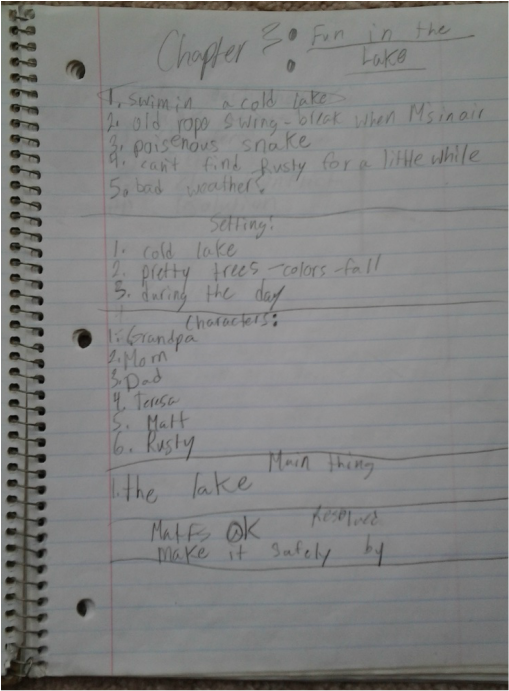Hi!
I’m going to do a two part “The process of writing a book” post. In this one, I’ll give some tips on how to start brainstorming and writing the book. In part two, I’ll explain editing.
Before you start writing, it's always a good idea to know what you're going to write about. Before starting my books, I would always be thinking about who my characters would be and what they would look like and act like. After I knew a lot about them, I'd think of a setting for my book. Using those two things, I would begin to create a plot roller-coaster.
I’m going to do a two part “The process of writing a book” post. In this one, I’ll give some tips on how to start brainstorming and writing the book. In part two, I’ll explain editing.
Before you start writing, it's always a good idea to know what you're going to write about. Before starting my books, I would always be thinking about who my characters would be and what they would look like and act like. After I knew a lot about them, I'd think of a setting for my book. Using those two things, I would begin to create a plot roller-coaster.
I borrowed this worksheet from the NaNo Workbook.
The plot roller-coaster helps develop the major events of the story. For the setup...
you would describe your characters, setting and anything else important to your story. Then, most books have a little crisis (a problem) that turns into a bigger problem when it reaches the climax (the most tense and exciting time.) The resolution comes at the end and ties all the loose ends together - that is - usually. In the Matt and Teresa Mystery series, this plot roller-coaster above shows what I used, but other stories will be different. Examples include my friend, Lauren-Kate's books which are very similar to mine until the end where the resolution happens and then suddenly, there's another problem.
After figuring out the major events on the plot roller-coaster, I get out my notebook and just start to brainstorm different things that could happen.
After figuring out the major events on the plot roller-coaster, I get out my notebook and just start to brainstorm different things that could happen.
After you've done that, it's time to figure out the order in which the events will happen. I suggest using notecards by writing a brief summary of what will happen on the back and then the chapter number and title (if you have it) on the front.
Sometimes before I begin writing or even in the middle of writing when I'm just not sure exactly what will happen, this is what I do.
1. Write down on a piece of paper, 5 things that should happen.
2. Write three things about the setting.
3. Who will the characters be?
4. What is the main idea of this chapter?
5. What will be the mini resolution if there is one?
Here's my example for chapter 3 of Mystery on the Trail.
Sometimes before I begin writing or even in the middle of writing when I'm just not sure exactly what will happen, this is what I do.
1. Write down on a piece of paper, 5 things that should happen.
2. Write three things about the setting.
3. Who will the characters be?
4. What is the main idea of this chapter?
5. What will be the mini resolution if there is one?
Here's my example for chapter 3 of Mystery on the Trail.
Now, you can begin! It will take a while, but the process will be fun. As you're writing, know that the first draft should not be perfect. It is very rare that it only will need a little bit of editing.
Next post...will be about the editing process.
Hope you enjoyed Part #1. I look forward to your feedback and comments.
Sydney
Next post...will be about the editing process.
Hope you enjoyed Part #1. I look forward to your feedback and comments.
Sydney




 RSS Feed
RSS Feed
